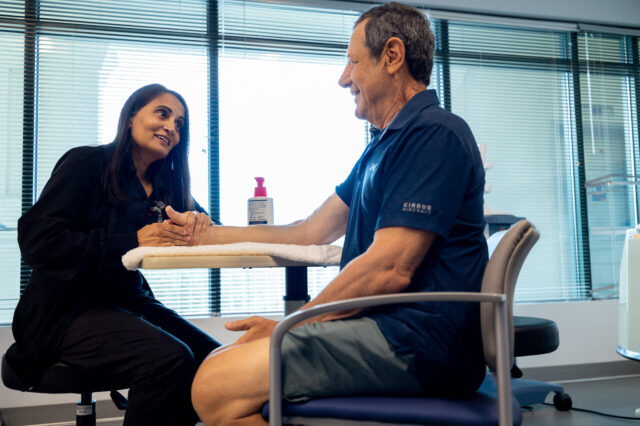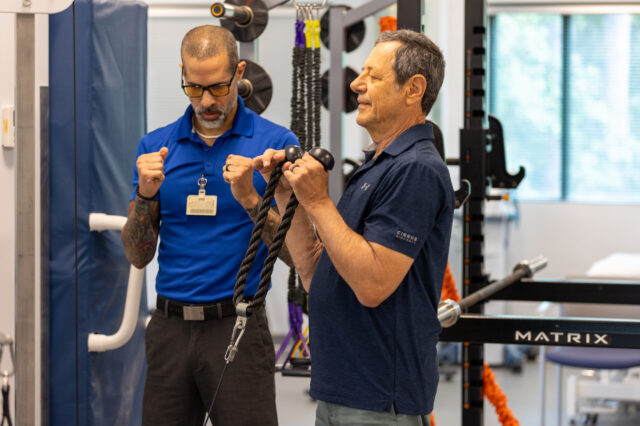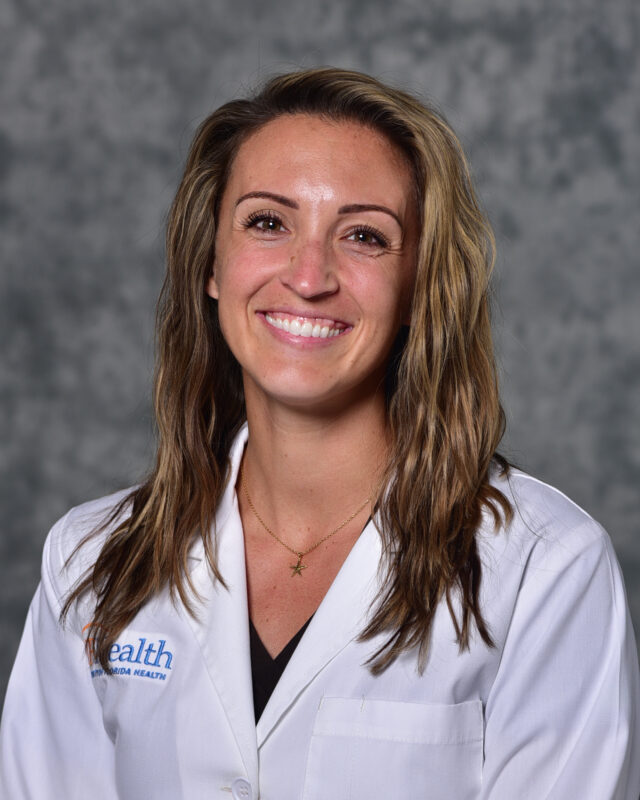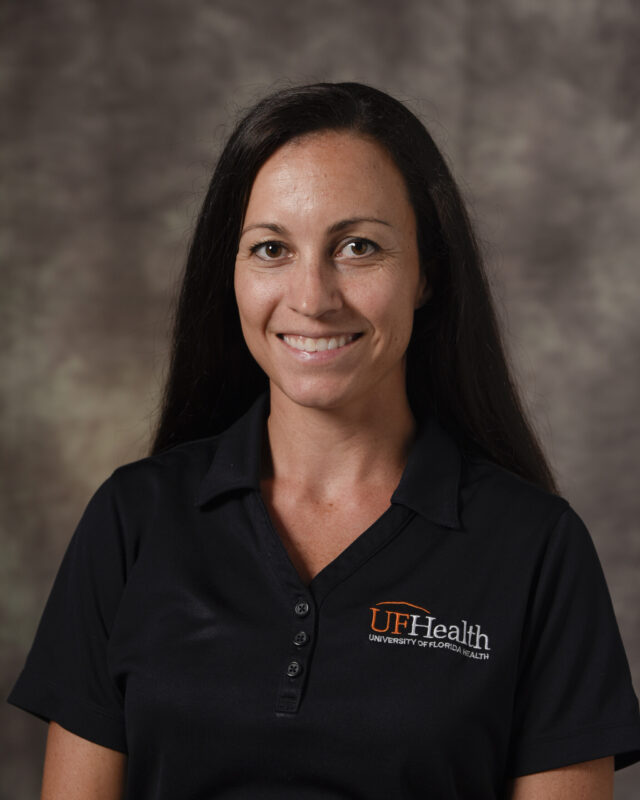A Night for Heroes Spotlight: Rehabilitation Services Role in Helping the 2024 Patient Honoree, Harvey Doliner

A Night for Heroes is an annual gala and fundraiser event that enables UF Health Jacksonville to highlight an extraordinary patient story and honor health care heroes who were actively involved in that person’s care. Our 2024 patient honoree, Harvey Doliner, continues to have specialty services provided by clinicians from occupational therapy and physical therapy.
The occupational therapists and physical therapists played a significant role in his recovery, not just physically, but emotionally as well, to get him back to the quality of life he enjoys.
Rehabilitation services provides comprehensive care at UF Health Jacksonville, starting from a patient’s hospitalization to their return home.
Read more below about how four of our rehabilitation services clinicians cared for Harvey Doliner.
Edwin Rivera
Edwin Rivera is a board-certified clinical specialist in orthopaedic physical therapy. He’s been at UF Health Jacksonville for 11 years. Rivera spends most of his days treating patients in one-on-one appointments.
Have you seen a case like this before? If no, explain why this case was different than most you’ve seen.
I have worked with patients dealing with traumatic injury to a limb, but nothing like this. For Harvey, my focus has been to restore as much function to the shoulder as possible. Harvey lost muscle in the accident. I don’t mean in terms of atrophy, I mean he literally had so much damage to the arm they removed muscle.
The shoulder is a very complex joint that requires the many muscles surrounding the shoulder blade and shoulder to work together. In order to move the shoulder in a purpose-driven way, these muscles have to fire in a particular pattern to execute a task. When you’re dealing with an injury, this pattern is often thrown off.
The mind-body connection that sets the pattern often times needs to be retrained to help prevent compensations, in addition to addressing the other deficits that are contributing to poor mechanics. For Harvey, we are trying to retrain motor patterns with muscles that may or may not be fully there. Add this fact on top of all the scar tissue he has from the accident, which can also limit mobility and muscle activation, and you have an even more complicated situation.
What kind of background, experience and education do you need to provide care for someone with these types of injuries?
You need someone with a strong background in orthopaedic physical therapy. Ideally, someone who has seen trauma before and can think outside of the box to solve unique issues that may come up. Also, being good with educating patients and able to deliver realistic expectations in a way that is both compassionate and motivating, is a skill that comes with experience from dealing with a wide variety of different cases and personalities.
How do you approach caring for a patient like this who requires a prolonged rehabilitation therapy?
Essentially, you just take it slow and set realistic long-term goals. If they exceed your expectations, then you set a higher bar and you keep slowly moving forward. From experience, I know someone like Harvey is going to take longer. In his case, I look for small changes that eventually add up to bigger changes over time, such as more mobility, better endurance, and less compensations when using the arm. It also makes my job easier to have someone as motivated as Harvey.
What kinds of goals did you work towards and achieve with Harvey, and what goals is he still striving to achieve?
I focused initially on his range of motion. He has a lot of scar tissue, which caused his shoulder to be very limited in mobility.
His gains were slow at first, because we would work on stretching and mobilizing the shoulder joint to see improvement during the session, but the scar tissue would quickly tighten and at times it seemed on the next session, we were back to where we started. It took a lot of hard work from Harvey to work through that and he is still working hard to maintain his mobility.
Our focus now has been more on improving shoulder mechanics by addressing strength, endurance and doing our best to reduce compensations, by improving the mind-body connection through various cueing techniques and practice. Harvey’s long-term goal is to get as much function back to the shoulder as possible, so he can go back to doing the things he enjoys, such as flying planes.
Katie Cooper
Katie Cooper is an occupational therapist for UF Health Jacksonville who splits her time between the outpatient rehab clinic at UF Health Wildlight in Yulee and the acute care clinic at the downtown campus.
Have you seen a case like this before? If no, explain why this case was different than most you’ve seen.
I have seen many severe traumatic injuries of the arm before, but not from an airplane propeller. The damage the propeller caused to Harvey's bones and soft tissue was extensive. Although the orthopaedic surgeons, Drs. Gitlin and Kaye, did an excellent job with his repairs, we knew that Harvey had a long road of rehab ahead of him.
What kind of background, experience and education do you need to provide care for someone with these types of injuries?
Due to the complexity of Harvey's injury, it is extremely beneficial to have experience with traumatic injuries that involve bone and soft tissue, as well as experience in wound care. Having knowledge in fabricating custom orthoses is also important, to not only protect his bone and tendon repairs, but also to create orthoses that will help stretch and mobilize his fingers.
How do you approach caring for a patient like this, who requires a prolonged rehabilitation therapy?
My approach to treating someone with this type of injury changes throughout the recovery process. My first priority and goals were wound healing, pain control, edema management, and protecting repaired structures.
As those improved, the priority was regaining range of motion and functionally using his hand again. This involved aggressive stretching and exercise, as well as fabricating splints that can be worn at home to also stretch and mobilize his fingers and wrist.
Education is also important. Not only educating the patient on what will happen in the treatment sessions, but also what needs to be done at home, as well as expectations throughout the entire process.
Nisha Patel
Nisha Patel is an occupational and certified hand therapist, who has been with UF Health Jacksonville since 2000. Her specialty as a certified hand therapist allows her to provide advanced care with complex trauma cases.
Have you seen a case like this before? If no, explain why this case was different than most you’ve seen.
Yes, I actually have seen multi-trauma to the upper extremity with similar injuries. Each case is different than others. It is important when treating cases like this one, to stay one step ahead of the game when planning a treatment protocol, to prevent subsequent issues from occurring.
What kind of background, experience and education do you need to provide care for someone with these types of injuries?
To treat multi-trauma cases like this, having a specialty in hand and upper extremity is most needed. An occupational or physical therapist who undergoes the certification for the CHT, or Certified Hand Therapist, would be able to bring about positive patient outcomes in a faster period of time, due to the extensive training that is required prior to obtaining the certification.
How do you approach caring for a patient like this, who requires a prolonged rehabilitation therapy?
Due to the multi-trauma this patient endured to the upper extremity, I used stages of wound healing and fracture healing as a basis on how much I can stress the tissues and facilitate tissue gliding, without disrupting any repairs that have been done, and eventually maximizing strength and fine-motor coordination to all muscle groups of the upper extremity.
What kinds of goals did you work towards and achieve with Harvey Doliner, and what goals is he still striving to achieve?
My first goal was facilitating all wound healing and maximizing tissue gliding, a hands-on technique on muscles, ligaments and fascia in order to break adhesions and optimize muscle function. Other goals were then based on functional needs of the patient’s dominant side. Harvey initially wanted to be independent with selfcare, then progressing to strength needed to lift, carry, and pinch various objects. A goal he is still striving for today is to be able to manipulate various knobs in an airplane and return to flying planes again.
Kelsey Hearn
Kelsey Hearn is a physical therapist who has been with UF Health Jacksonville for eight years.
Have you seen a case like this before? If no, explain why this case was different than most you’ve seen.
No. This was a unique case, due to extensive trauma affecting the entire arm to his hand. It required a shoulder open reduction and internal fixation, or ORIF, a surgical procedure that puts pieces of a broken bone back into place.
What kind of background, experience and education do you need to provide care for someone with these types of injuries?
I am a board-certified orthopedic physical therapy clinical specialist, or OCS.
How do you approach caring for a patient like this, who requires a prolonged rehabilitation therapy?
I try helping the patient stay optimistic and focused on achieving small goals and gains week-to-week versus day-to-day. Extensive rehab such as Harvey’s is a marathon, not a sprint.
About the author




